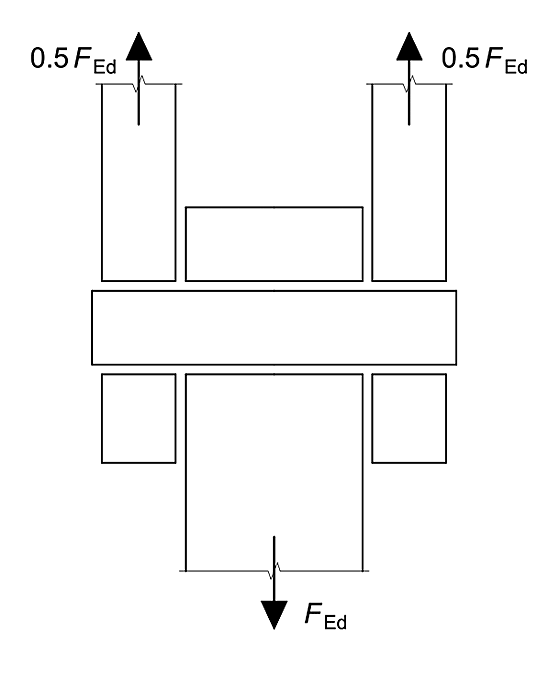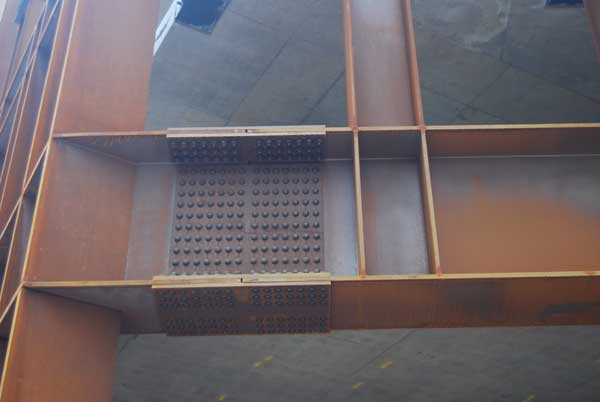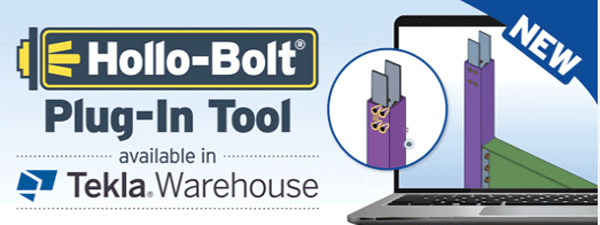Technical
AD 527: Hybrid connections with bolts and welds
SCI’s Advisory service occasionally receives questions about connections where load is to be shared between bolts and welds. This AD explains the code requirements and why hybrid connections are generally not recommended.
So-called hybrid connections, where load might be shared between bolts and welds are covered by clause 3.9.3 of BS EN 1993-1-8. The clause permits Category C bolts (non-slip at ULS) to share load with welds, provided the final tightening of the bolts is carried out after welding is complete.
Non-preloaded bolts transfer load in shear and bearing. The bearing deformation and the movement in clearance holes mean that if this category of fixing were used in a hybrid connection, all the load would actually be carried by the welds, since the welds prevent movement. The same principle applies for hybrid connections using Category B bolts, as these are assumed to slip between SLS and ULS.
Using Category C bolts, preloaded after completion of the welding, precludes slip, so it can be assumed that the welds and Category C bolts share the load.
SCI is not aware of any guidance on how the force might be shared between the bolts and welds. The situation is unlikely to be simple as it will depend on the stress distribution through the connection, which will be affected by the arrangement of bolts and welds. Owens and Cheal¹ point out that the strength and stiffness of fillet welds vary substantially with the direction of the applied load. A second comment is that an elastic analysis based on a single value of weld stiffness cannot be accurate; the limited ductility of the weld precludes the use of simple plastic analysis. It may be possible to undertake a finite element analysis (FEA) of a hybrid connection, though SCI’s experience is that FEA is often not straightforward.
The guidance on hybrid connections is not new – identical guidance is given in clause 6.1.1 of BS 5950, but SCI’s advice is that hybrid connections should not adopted without very careful consideration of the force distribution within the connection.
¹ Owens, Graham W.; and Cheal, Brian D. 1989. Structural steelwork connections, Butterworth & Co. Ltd, London, UK
Contact: Advisory Desk
Telephone: 01344 636555
Email: advisory@steel-sci.com













